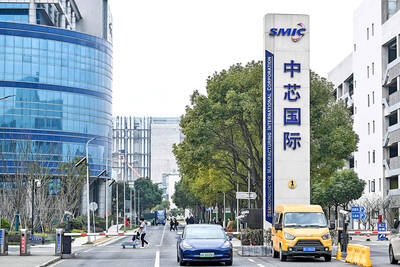Taiwan Power Co (Taipower, 台電) expects to complete the nation’s biggest solar plant by the end of August next year, doubling the state-run utility’s capacity to produce electricity from sunlight.
The 4.6-megawatt plant will boost Taipower’s installed solar capacity to more than 9 megawatts, chief engineer Tu Yueh-yuan (杜悅元) said yesterday. One megawatt is enough to power 800 US homes.
Taiwan is seeking to tap renewable sources of energy to help cut carbon emissions.
Fortune Electric Co (華城電機) is building the plant in Kaohsiung County at a cost of NT$649 million (US$20 million), while Suntech Power Holdings Co (尚德太陽能) will supply the solar panels, Tu said.
To spur renewable energy use, the government set minimum wholesale prices in December for electricity generated by solar panels and wind turbines at levels higher than for power from fossil fuels.
In June lawmakers approved the Renewable Energy Development Act (再生能源發展條例), designed to help cut carbon emissions and reduce dependence on imports, according to the Bureau of Energy.
Taiwan relies on overseas shipments for about 99 percent of its energy needs.
“We’ll continue to build solar plants,” Tu said, without giving details.
The government owns 97 percent of Taipower, which generates about 75 percent of the electricity the nation uses.
Suntech Power, based in Jiangsu, China, is the world’s largest maker of polysilicon solar-power modules.

SEMICONDUCTOR SERVICES: A company executive said that Taiwanese firms must think about how to participate in global supply chains and lift their competitiveness Taiwan Semiconductor Manufacturing Co (TSMC, 台積電) yesterday said it expects to launch its first multifunctional service center in Pingtung County in the middle of 2027, in a bid to foster a resilient high-tech facility construction ecosystem. TSMC broached the idea of creating a center two or three years ago when it started building new manufacturing capacity in the US and Japan, the company said. The center, dubbed an “ecosystem park,” would assist local manufacturing facility construction partners to upgrade their capabilities and secure more deals from other global chipmakers such as Intel Corp, Micron Technology Inc and Infineon Technologies AG, TSMC said. It

NO BREAKTHROUGH? More substantial ‘deliverables,’ such as tariff reductions, would likely be saved for a meeting between Trump and Xi later this year, a trade expert said China launched two probes targeting the US semiconductor sector on Saturday ahead of talks between the two nations in Spain this week on trade, national security and the ownership of social media platform TikTok. China’s Ministry of Commerce announced an anti-dumping investigation into certain analog integrated circuits (ICs) imported from the US. The investigation is to target some commodity interface ICs and gate driver ICs, which are commonly made by US companies such as Texas Instruments Inc and ON Semiconductor Corp. The ministry also announced an anti-discrimination probe into US measures against China’s chip sector. US measures such as export curbs and tariffs

The US on Friday penalized two Chinese firms that acquired US chipmaking equipment for China’s top chipmaker, Semiconductor Manufacturing International Corp (SMIC, 中芯國際), including them among 32 entities that were added to the US Department of Commerce’s restricted trade list, a US government posting showed. Twenty-three of the 32 are in China. GMC Semiconductor Technology (Wuxi) Co (吉姆西半導體科技) and Jicun Semiconductor Technology (Shanghai) Co (吉存半導體科技) were placed on the list, formally known as the Entity List, for acquiring equipment for SMIC Northern Integrated Circuit Manufacturing (Beijing) Corp (中芯北方積體電路) and Semiconductor Manufacturing International (Beijing) Corp (中芯北京), the US Federal Register posting said. The

India’s ban of online money-based games could drive addicts to unregulated apps and offshore platforms that pose new financial and social risks, fantasy-sports gaming experts say. Indian Prime Minister Narendra Modi’s government banned real-money online games late last month, citing financial losses and addiction, leading to a shutdown of many apps offering paid fantasy cricket, rummy and poker games. “Many will move to offshore platforms, because of the addictive nature — they will find alternate means to get that dopamine hit,” said Viren Hemrajani, a Mumbai-based fantasy cricket analyst. “It [also] leads to fraud and scams, because everything is now